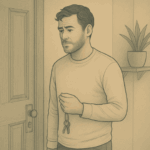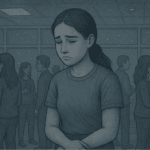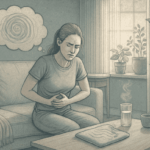Key Takeaways
- Decision paralysis occurs when anxiety prevents you from making choices due to fear of negative outcomes or feeling overwhelmed by options.
- Common examples include freezing in grocery stores when faced with too many options, stalling on career decisions, and avoiding relationship conversations.
- Anxiety physically changes your brain chemistry during decision-making, activating the amygdala’s threat response and reducing access to your rational prefrontal cortex.
- Implementing structured approaches like the 10/10/10 rule and setting decision deadlines can break the cycle of overthinking and restore decision-making confidence.
- A Mission for Michael specializes in evidence-based anxiety treatment programs that address both the underlying anxiety and decision-making processes.
Understanding Decision Making Paralysis
Decision paralysis isn’t simply indecisiveness. It’s a specific type of mental gridlock where anxiety prevents you from making choices, leaving you stuck in an exhausting loop of analysis and worry.
While everyone experiences occasional difficulty with decisions, anxiety-driven paralysis is persistent, distressing, and interferes with daily functioning.
Decision paralysis occurs for several key reasons, and understanding them can help you recognize when you’re caught in this mental trap.
| A Mission For Michael: Expert Mental Health Care Founded in 2010, A Mission For Michael (AMFM) offers specialized mental health care across Southern California, Minnesota, and Virginia. Our accredited facilities provide residential and outpatient programs, utilizing evidence-based therapies such as CBT, DBT, and EMDR. Our dedicated team of licensed professionals ensures every client receives the best care possible, supported by accreditations from The Joint Commission and the California Department of Health Care Services. We are committed to safety and personalized treatment plans. Start your recovery journey with AMFM today! |
Anxiety’s Grip on Decision Making
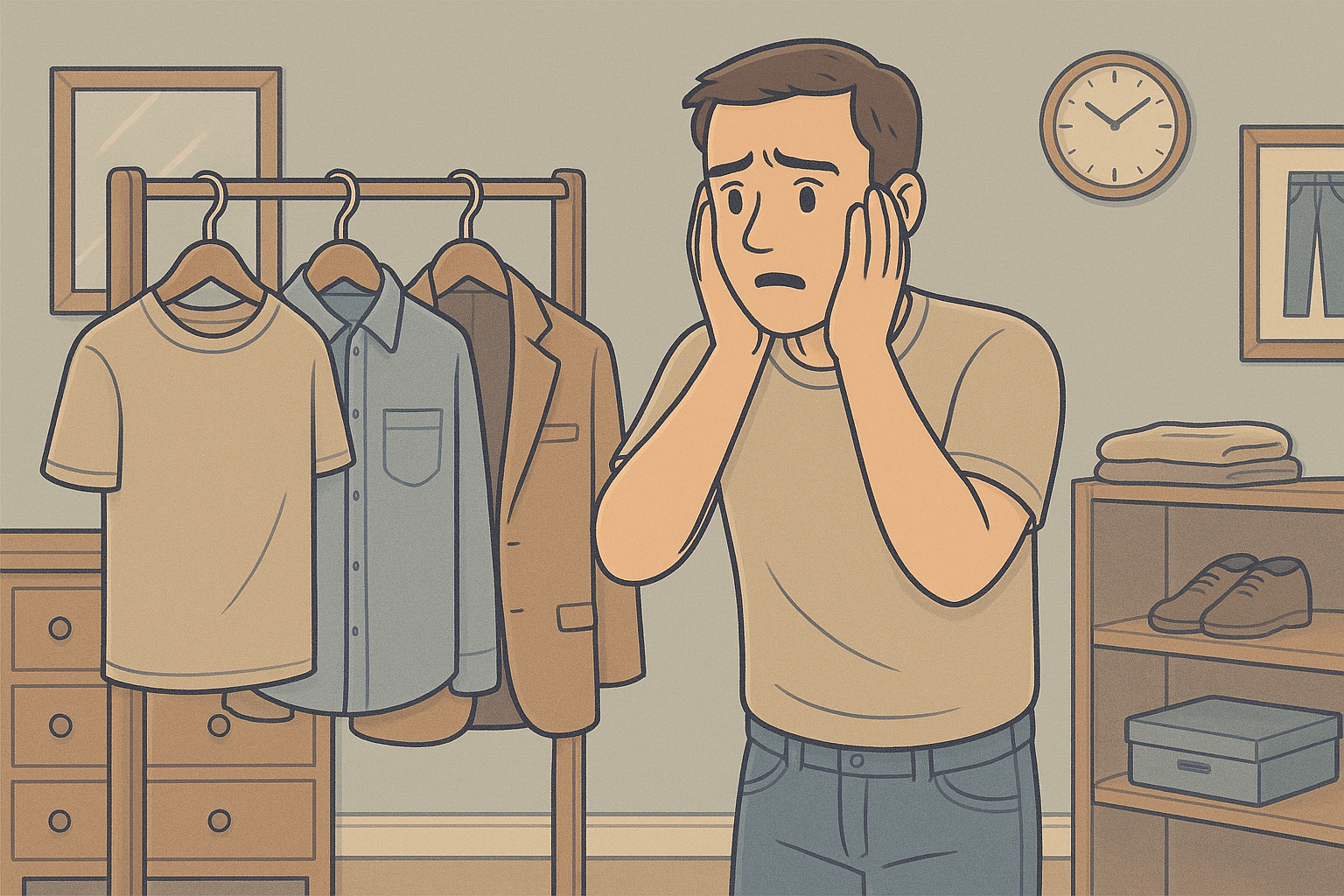
Anxiety doesn’t just make decisions feel difficult; it fundamentally alters how your brain processes information when faced with choices.
Anxiety causes neurological hijacking that explains why logical arguments often fail to break through decision paralysis. Understanding these mechanisms can help you recognize when anxiety is influencing your thought processes rather than rational evaluation.
Brain Chemistry Changes
When anxiety strikes during decision-making, your brain chemistry undergoes significant changes. Stress hormones like cortisol and adrenaline flood your system, triggering your body’s fight-or-flight response.
These biochemical changes redirect blood flow away from your prefrontal cortex (responsible for rational thinking) and toward systems focused on survival and threat detection.
This chemical shift explains why you might feel physically uncomfortable when faced with decisions during periods of anxiety as your body is literally preparing for danger rather than thoughtful analysis.
Overthinking Cycle
Anxiety creates a particularly vicious overthinking cycle that feeds on itself. It starts with a decision trigger that activates worry, leading to endless analysis of potential outcomes.
This exhaustive mental review rarely leads to clarity, instead, it typically generates even more “what if” scenarios and concerns. As mental fatigue sets in, your ability to evaluate options objectively decreases further, reinforcing the feeling that no decision is safe to make.
Fear Response Activation
During decision paralysis, your amygdala, the brain’s alarm system, goes into overdrive, perceiving choices as potential threats. This primitive brain region doesn’t distinguish between physical dangers and the psychological discomfort of making a wrong decision.
When activated, it triggers a cascade of physical symptoms including increased heart rate, shallow breathing, and muscle tension that many describe as feeling “frozen” or “stuck.”
This fear response makes logical evaluation nearly impossible as your brain is literally preparing for survival, not thoughtful analysis. For those with anxiety disorders, this response is often disproportionate to the actual stakes of the decision, making even minor choices feel overwhelming.
Real-Life Decision Paralysis Examples & Coping Strategies
Grocery Store Freeze
Standing in the cereal aisle, a shopper feels their heart racing as they stare at dozens of breakfast options. What started as a simple shopping trip has turned into a 45-minute ordeal as they weigh nutritional information, price comparisons, and what they might regret not buying.
They read label after label, check prices repeatedly, and still can’t commit to a choice. Eventually, they leave without any cereal at all, feeling both frustrated and relieved to escape the situation.
This seemingly minor decision has activated their anxiety about making the “wrong” choice. The physical symptoms, racing heart, tight chest, and scattered thoughts are disproportionate to the actual stakes of the decision, signaling classic decision paralysis.
Coping Strategy: Set Time Limits and Criteria
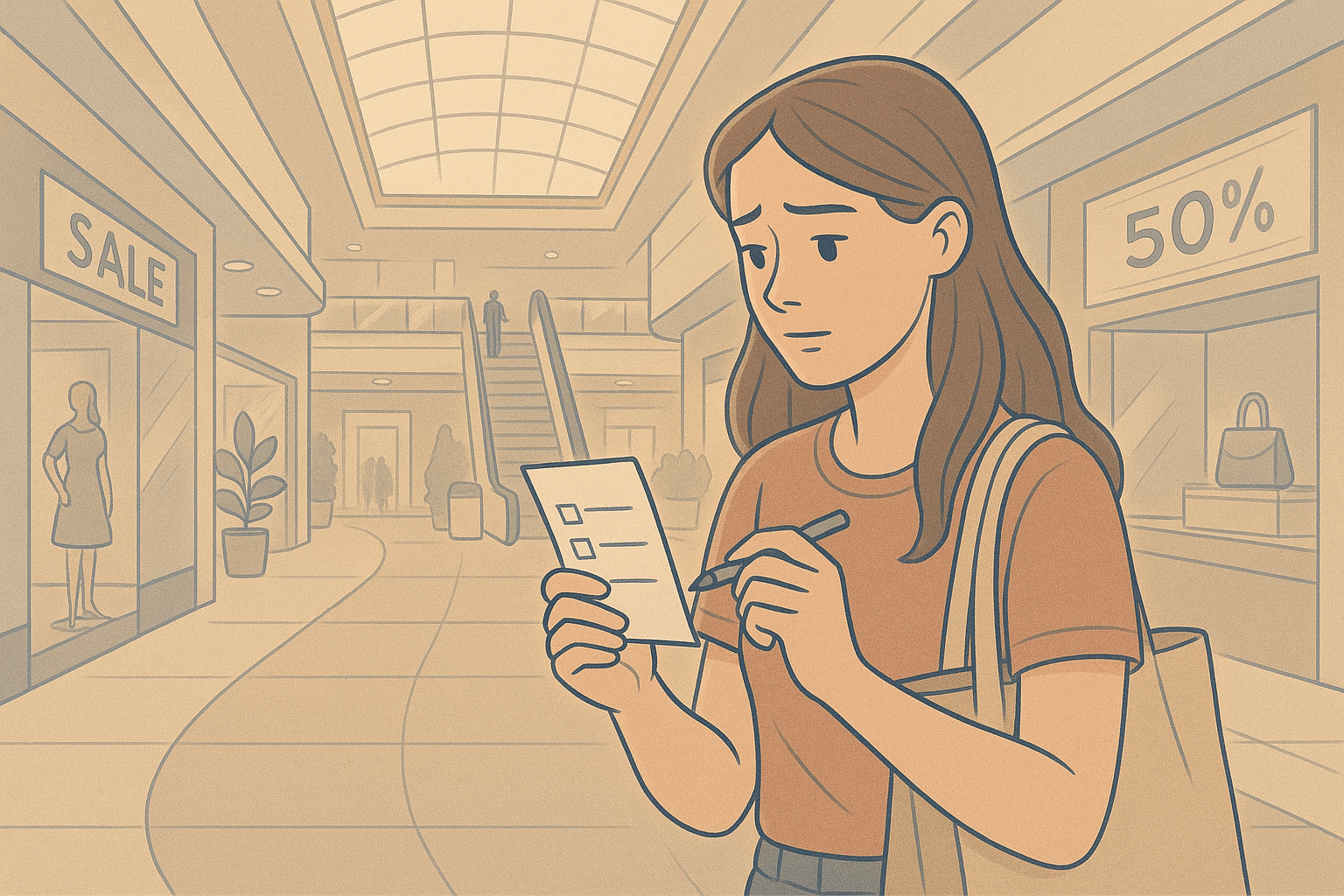
Create pre-determined shopping criteria before entering the store.
Set a maximum of three factors to consider (like price, nutrition, and taste preference) and give yourself a strict time limit of two minutes per decision.
When the time expires, choose the option that meets most of your criteria. Know that most grocery decisions are easily reversible; you can simply buy a different brand next time.
Relationship Hesitation
After dating for years, someone can’t decide whether to commit to moving in with their partner. Despite being happy in the relationship, they obsessively weigh every potential problem: What if they discover incompatibilities? What if they break up after moving in? What if they miss their independence? Every time they nearly commit, a new “what if” scenario emerges, resetting their decision process.
This pattern reflects anxiety’s tendency to catastrophize future outcomes. Rather than seeing the decision as a normal life step with manageable risks, their anxiety transforms it into an all-or-nothing scenario with potentially devastating consequences. The uncertainty feels unmanageable, keeping them trapped in relationship limbo.
Coping Strategy: Focus on Present Reality and Trial Periods
Ground your decision in current reality rather than hypothetical futures. List concrete evidence about your relationship’s current health and compatibility.
Consider a trial period approach, perhaps a short-term lease or maintaining separate spaces initially. This allows you to experience the change without the pressure of permanent commitment, making the decision feel more manageable and reversible.
Difficulties with Daily Tasks
A person has a to-do list with fifteen items but spends hours unable to decide which task to start first. They begin one task, then worry another is more urgent, switch focus, then question if a third task is actually the priority. By the day’s end, they’ve started multiple tasks but completed none, leaving them feeling ineffective and overwhelmed.
This everyday example shows how decision paralysis can impact productivity and self-esteem. The anxiety isn’t about the tasks themselves but about making the “wrong” choice about how to use limited time and energy. The result is decision avoidance through constant task-switching, creating a cycle of inefficiency and stress.
Coping Strategy: Priority Matrix and Time Blocking
Use a simple priority matrix to categorize tasks as urgent/important, important/not urgent, urgent/not important, or neither. Start with urgent and important tasks, then move systematically through the categories.
Implement time blocking by assigning specific time slots to tasks and committing to work on only that task during its designated time. Completing an imperfect task is better than perfectly planning tasks that never get done.
Alternative Quick Decision-Making Strategies

When anxiety blocks your decision-making capabilities, having structured approaches can create a path forward.
1. The 10/10/10 Rule
This powerful perspective tool asks you to consider how a decision will impact you in three timeframes: 10 minutes, 10 months, and 10 years from now.
By explicitly considering these different horizons, you gain perspective on what truly matters. Most anxiety-inducing decisions have significant short-term emotional impacts but minimal long-term consequences.
This realization often releases the paralysis grip by showing that many feared outcomes are temporary and manageable.
2. Decision Deadlines
Setting firm time boundaries for decisions counteracts anxiety’s tendency to extend deliberation indefinitely.
Choose a reasonable timeframe for the decision at hand, perhaps 24 hours for minor choices or two weeks for larger ones, and commit to making a choice when that deadline arrives.
This approach acknowledges that having some decision-making process is valuable, while preventing the diminishing returns of endless analysis.
3. Pros/Cons Lists
While seemingly simple, a structured pros and cons analysis provides a concrete way to externalize your thinking and reduce the mental load of keeping all factors in your head simultaneously.
The act of writing down considerations helps engage your rational brain and creates distance from emotional reactivity. To enhance this approach, assign weight values to each factor based on importance, creating a more nuanced evaluation than a simple counting of items.
Rather than repeatedly analyzing the same factors, you can reference your previous thinking and remind yourself of the rational basis for your choice.
Overcoming Decision Paralysis with AMFM’s Expert Care
At A Mission for Michael, we understand that overcoming decision paralysis requires more than simple willpower or time management techniques. Our specialized anxiety treatment programs address both the neurological underpinnings of decision anxiety and the practical skills needed to make choices with confidence.

AMFM provides the supportive environment and expert guidance necessary to reclaim your ability to make choices and move forward with clarity and purpose.
Through evidence-based approaches like Cognitive-Behavioral Therapy, Dialectical Behavior Therapy, and comprehensive case management, our experienced clinicians work with you to identify anxiety triggers, restructure distorted thinking patterns, and develop personalized strategies for breaking through decision gridlock.
Our integrated treatment model recognizes that sustainable recovery from decision paralysis happens when you address both the symptoms and their underlying causes. Whether through our residential programs or flexible outpatient services across California, Virginia, and Washington, we provide the supportive environment and expert guidance necessary to reclaim your ability to make choices and move forward with clarity and purpose.
Frequently Asked Questions
How can I tell the difference between healthy caution and decision paralysis?
Healthy caution involves thoughtful consideration proportionate to the decision’s importance, leading to timely action. Decision paralysis, however, involves disproportionate distress, endless information-seeking without resolution, physical anxiety symptoms during decision-making, and consistent avoidance or postponement of choices.
The key distinction is if your deliberation process ultimately enables effective action or prevents it entirely.
Can medication help with decision-making anxiety?
For individuals with diagnosed anxiety disorders, medication can be a helpful component of treatment for decision paralysis. Anti-anxiety medications and certain antidepressants can reduce overwhelming symptoms that interfere with clear thinking.
However, medication alone rarely resolves decision paralysis completely. The most effective approach typically combines appropriate medication with therapy focused on cognitive restructuring and practical uncertainty management strategies.
Why do I make some decisions easily but freeze on others?
This common experience often relates to specific anxiety triggers embedded in certain types of decisions. Decisions involving particular domains (finances, relationships), specific feared consequences (disapproval, failure), or those resembling past negative experiences may activate anxiety responses.
Your general stress level, physical state, and available cognitive resources also significantly impact your decision-making capacity at any given time.
How can A Mission for Michael help with my decision paralysis and anxiety?
A Mission for Michael specializes in comprehensive anxiety treatment programs that specifically address decision paralysis through evidence-based approaches like Cognitive-Behavioral Therapy (CBT) and Dialectical Behavior Therapy (DBT).
Our experienced clinicians understand the connection between anxiety and decision-making difficulties, offering personalized treatment plans that combine individual therapy, group sessions, and practical strategies.








